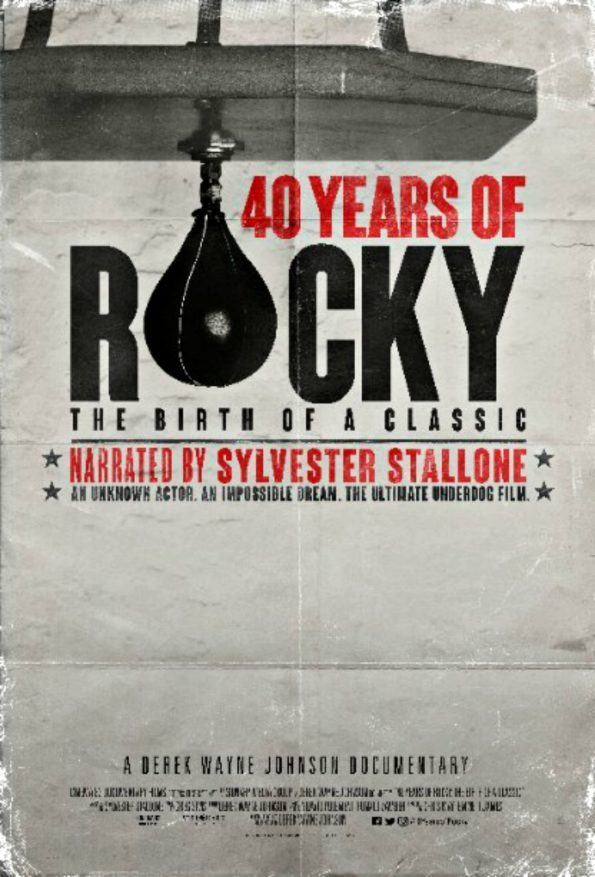The stories about underdog achiever “Rocky” never get old, and Sylvester Stallone sounds like anyone else getting a kick out of recalling a momentous time of his life while watching 8mm films from the unlikely low-budget film set in the delightul and fascinating new 30-minute documentary 40 Years of Rocky: The Birth of a Classic (Virgil Films & Entertainment digital HD release June 9 – Prime Video HD pre-order $2.99; SD $1.99).

Stallone infectiously narrates what is mostly personal films shot by “Rocky” director John G. Avildsen in 1975 during the production process and while working out various camera shots and boxing choreography. Stallone’s casual narration as if he’s seeing this for the first time — “Oh, there’s my brother Frank” – provides perfect context to the footage as he explains the painstaking and groundbreaking process they went through to choreograph the boxing scenes with he and former Oakland Raiders linebacker Carl Weathers.
He also notes the movie’s break-through technology innovations such as the Steadicam for the famous scenes of him picking up speed during his running workout.
The film also includes never-before-seen footage found recently in the basement of “Rocky” Production Manager Lloyd Kaufman, who is now president of Troma Entertainment.
Noteworthy trivia tidbits are also sprinkled in text throughout the film, noting that film score composer Bill Conti was paid only $25,000 for creating the now-iconic and Oscar-nominated, chart-topping song Gonna Fly Now, and that also had to cover the fee for the recording studio. It was not only Conti’s first big break but also Stallone’s, whom the trivia tidbits note only had a little more than $100 to his name when he made the movie.
Nevermind that there have been seven sequels and counting in this franchise; watching the origins of this passion project through behind-the-scenes footage is not only nostalgic but makes the Rocky experience feel almost as fresh and exhilarating as it did win 1976. One gets the sense that it felt that way for Stallone too.
— By Scott Hettrick
